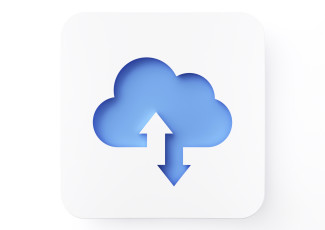How Technology Helps Rural Students Learn
By Reyna Gobel
January 23, 2015
Minnesota’s Pine Technical and Community College is creating online courses that its rural students can access via dial-up connections and television sets.
When offering online and remote education, you work with what you have — or around what your students don’t have.
At Pine Technical and Community College (PTCC) in rural Pine City, Minn., many students don’t have access to high-speed Internet. So the college offers courses designed to be accessed via a dial-up connection — the only Internet connection available in some smaller communities — and a television set equipped with special camera equipment.
We chatted with Robert Musgrove, the president of PTCC, about what it takes to offer these types of courses in rural communities and how technology can help level the playing field for educators, especially when faced with unique distance and resource challenges.
What are the challenges in creating courses delivered via dial-up connections? We have to focus on content that’s primarily narrative. Graphic and video content don’t work as well. We also pay attention to what subjects can be taught well in this format. For instance, highly technical courses such as engineering need more instruction and video elements.
Do you provide Internet access to students who don’t have it? Around 10 years ago, PTCC became an Internet hub for the area. Fiber lines stretch to public libraries, where students have access to broadband Internet.
Are there other creative ways you’re teaching students with limited technology access? In the last few years, we started teaching employees at manufacturing plants new processes. With a larger population of older adults at these plants, teaching via computer wasn’t as effective.
We bought interactive TVs with a U.S. Department of Labor grant. The students have a camera in the room, so the instructor can see them. The instructor teaches from our campus, in a room with four monitors, so he or she can teach students at up to four manufacturing plants. There’s also a keyboard at each location. Google documents are often used, so all four locations can work together on the same document.
Instructors encourage interaction and ask students to raise hands or use another cue to be acknowledged. Classes can hold up to 20 students total, with normally four or five students per location.
Will these students be able to complete degrees or certificates? Students earn stackable credentials that lead them to a certificate. Then they can continue on to an advanced manufacturing associate degree.
What other projects are you working on? The college and its manufacturing partners are experimenting now with a new Internet-based web-conferencing software platform, using a product called Acano. The tool creates a secure co-space, where as many as 30 to 40 student/employees at the companies can join with an instructor from the college and utilize interactive video and online tools at their desk on a computer or through a video-conferencing unit, an iPad, or even a smartphone. We’re working with other area colleges to provide instruction over the cloud and share resources.
Musgrove offers these three tips for college administrators in rural areas who want to provide online courses:
- Talk to business partners first. Find out which programs they most need, and then determine what course-delivery options will work best for students. Find out if you’ll need firewall protection for the course.
- Have camera-ready instructors. Train instructors on how to teach with a camera before the class begins.
- Involve IT the whole way. You’ll need constant advice on what kind of content and media will work best within specific technology limitations.










